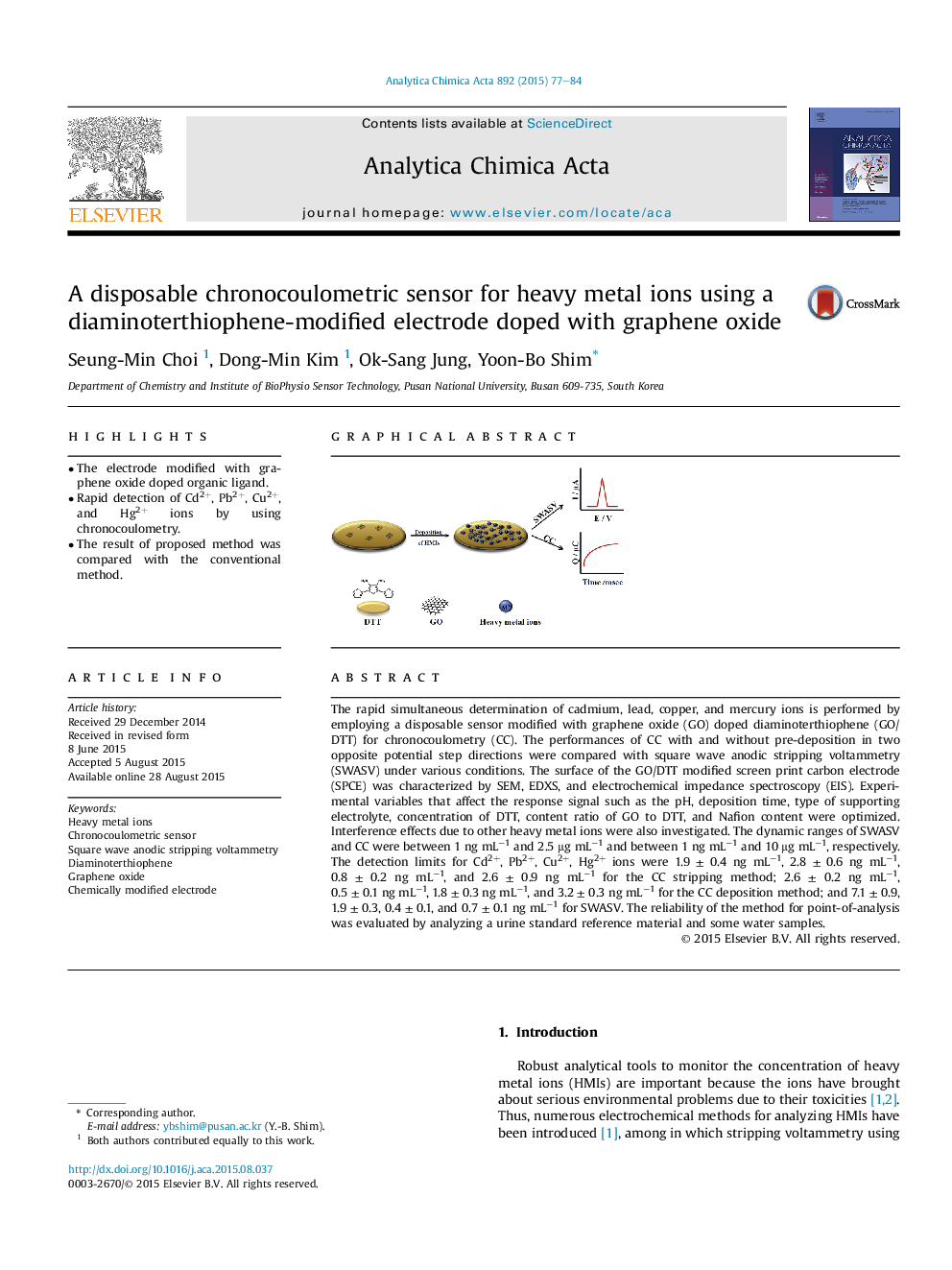| کد مقاله | کد نشریه | سال انتشار | مقاله انگلیسی | نسخه تمام متن |
|---|---|---|---|---|
| 1163424 | 1490940 | 2015 | 8 صفحه PDF | دانلود رایگان |
• The electrode modified with graphene oxide doped organic ligand.
• Rapid detection of Cd2+, Pb2+, Cu2+, and Hg2+ ions by using chronocoulometry.
• The result of proposed method was compared with the conventional method.
The rapid simultaneous determination of cadmium, lead, copper, and mercury ions is performed by employing a disposable sensor modified with graphene oxide (GO) doped diaminoterthiophene (GO/DTT) for chronocoulometry (CC). The performances of CC with and without pre-deposition in two opposite potential step directions were compared with square wave anodic stripping voltammetry (SWASV) under various conditions. The surface of the GO/DTT modified screen print carbon electrode (SPCE) was characterized by SEM, EDXS, and electrochemical impedance spectroscopy (EIS). Experimental variables that affect the response signal such as the pH, deposition time, type of supporting electrolyte, concentration of DTT, content ratio of GO to DTT, and Nafion content were optimized. Interference effects due to other heavy metal ions were also investigated. The dynamic ranges of SWASV and CC were between 1 ng mL−1 and 2.5 μg mL−1 and between 1 ng mL−1 and 10 μg mL−1, respectively. The detection limits for Cd2+, Pb2+, Cu2+, Hg2+ ions were 1.9 ± 0.4 ng mL−1, 2.8 ± 0.6 ng mL−1, 0.8 ± 0.2 ng mL−1, and 2.6 ± 0.9 ng mL−1 for the CC stripping method; 2.6 ± 0.2 ng mL−1, 0.5 ± 0.1 ng mL−1, 1.8 ± 0.3 ng mL−1, and 3.2 ± 0.3 ng mL−1 for the CC deposition method; and 7.1 ± 0.9, 1.9 ± 0.3, 0.4 ± 0.1, and 0.7 ± 0.1 ng mL−1 for SWASV. The reliability of the method for point-of-analysis was evaluated by analyzing a urine standard reference material and some water samples.
Figure optionsDownload as PowerPoint slide
Journal: Analytica Chimica Acta - Volume 892, 10 September 2015, Pages 77–84
